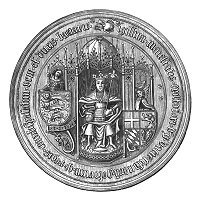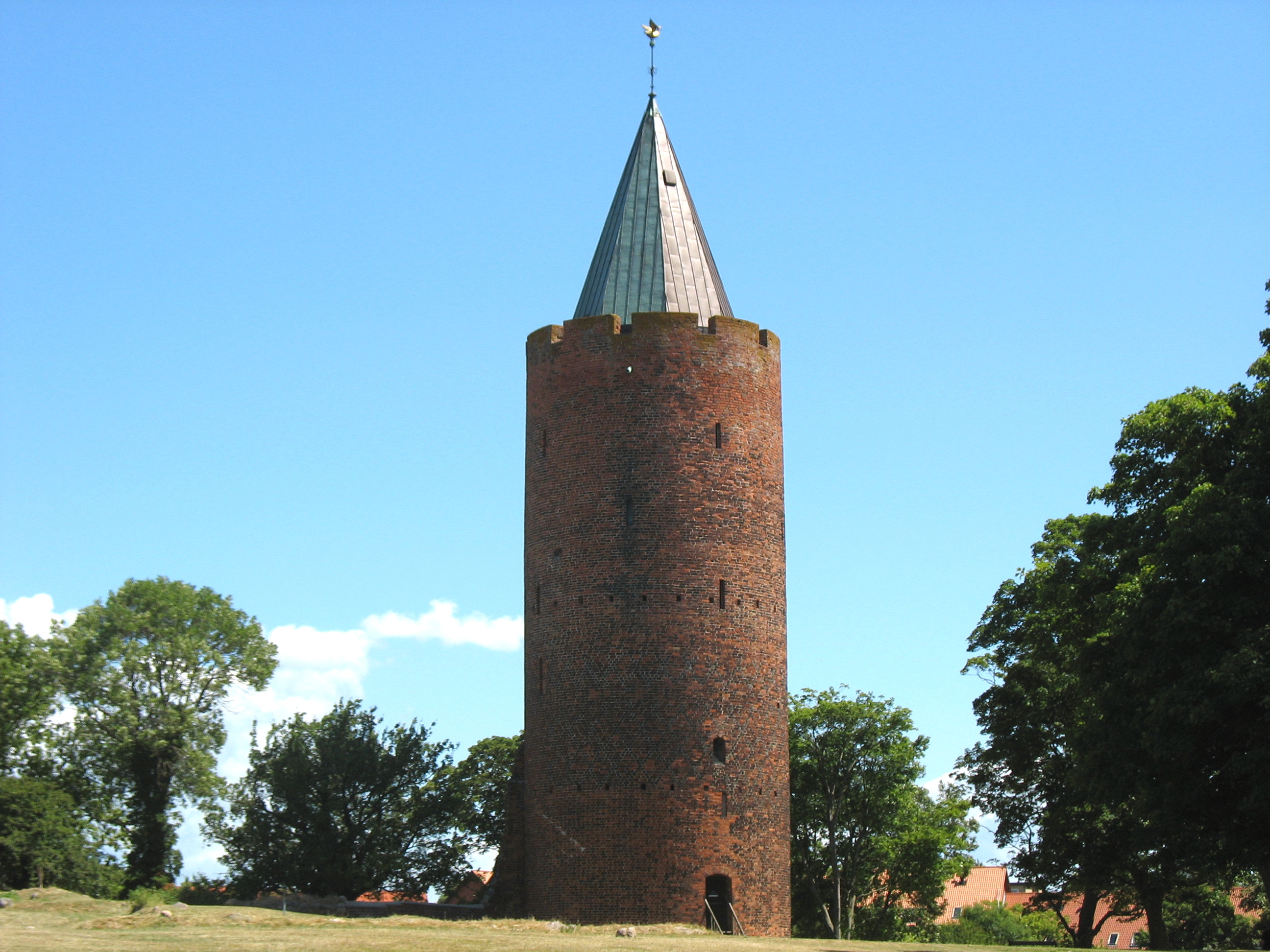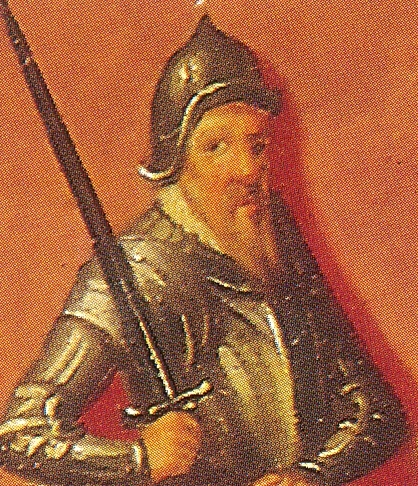|
Adolphus VIII Of Holstein
Adolphus XI of Schauenburg ( nds, Alef or Alv, german: Adolf von Schauenburg, da, Adolf 8. af Holsten-Rendsborg) (1401 – 4 December 1459), as Adolph I Duke of Schleswig ( da, Sønderjylland, formerly ), and as Adolph VIII Count of Holstein-Rendsburg, was the mightiest vassal of the Danish realm. Background Adolph descended from a branch of the House of Schauenburg, who had for centuries been counts of Holstein, and as such, vassals of the Holy Roman Empire. His great-grandfather Gerhard the Great, having also been a Regent of the Kingdom of Denmark, had received the Duchy of Sønderjylland from the Danish crown as a hereditary fief. It had been lost for the Schauenburgs between 1330 and 1375, with Queen Margaret I of Denmark restricting the regained ducal power in 1386, and again from 1414 to 1440. Count Adolph's parents were Gerhard VI, Count of Holstein-Rendsburg and Catherine Elisabeth of Brunswick-Lüneburg. Adolph was only three years old when his father was kille ... [...More Info...] [...Related Items...] OR: [Wikipedia] [Google] [Baidu] |
Counts Of Schauenburg And Holstein
The Counts of Schauenburg and Holstein were titles of the Frankish Empire. The dynastic family came from the County of Schauenburg near Rinteln (district Schaumburg) on the Weser in Germany. Together with its ancestral possessions in Bückeburg and Stadthagen, the House of Schauenburg ruled the County of Schauenburg and the County of Holstein. The comital titles of Holstein were subject to the liege lord, the Dukes of undivided Saxony till 1296, and thereafter the Dukes of Saxe-Lauenburg. The counties of Schauenburg and Holstein The County of Schaumburg originated as a medieval county, which was founded at the beginning of the 12th century. It was named after Schauenburg Castle, near Rinteln on the Weser, where the owners started calling themselves Lords (from 1295 Counts) of Schauenburg. Adolf I probably became the first Lord of Schauenburg in 1106. In 1110, Adolf I, Lord of Schauenburg was appointed by Lothair, Duke of Saxony to hold Holstein and Stormarn, including Hambu ... [...More Info...] [...Related Items...] OR: [Wikipedia] [Google] [Baidu] |
Ditmarsh
Dithmarschen (, Low Saxon: ; archaic English: ''Ditmarsh''; da, Ditmarsken; la, label=Medieval Latin, Tedmarsgo) is a district in Schleswig-Holstein, Germany. It is bounded by (from the north and clockwise) the districts of Nordfriesland, Schleswig-Flensburg, Rendsburg-Eckernförde, and Steinburg, by the state of Lower Saxony (district of Stade, from which it is separated by the Elbe river), and by the North Sea. From the 13th century up to 1559 Dithmarschen was an independent peasant republic within the Holy Roman Empire and a member of the Hanseatic League. Geography The district is located on the North Sea. It is embraced by the Elbe estuary to the south and the Eider estuary to the north. Today it forms a kind of artificial island, surrounded by the Eider river in the north and the Kiel Canal in both the east and southeast. It is a rather flat countryside that was once full of fens and swamps. To the north it borders on Nordfriesland and Schleswig-Flensburg, to the east o ... [...More Info...] [...Related Items...] OR: [Wikipedia] [Google] [Baidu] |
Christopher III
Christopher of Bavaria (26 February 1416 – 5/6 January 1448) was King of Denmark (1440–48, as Christopher III), Sweden (1441–48) and Norway (1442–48) during the era of the Kalmar Union. Biography Coming to power He was the son of John, Count Palatine of Neumarkt (1383–1443) and Catherine of Pomerania (c. 1390–1426). Catherine was the daughter of Wartislaw VII, Duke of Pomerania in Pomerania-Stolp, and sister of the Scandinavian king, Eric of Pomerania. Count Palatine John was a son of King Rupert of Germany (1352–1410). Christopher was probably born at Neumarkt in der Oberpfalz in Upper Palatinate, in Bavaria, Germany. In 1445, Christopher married Dorothea of Brandenburg (1430 – 25 November 1495) in Copenhagen. Eric of Pomerania was deposed as king of Denmark and Sweden in 1439. Eric's nephew, Christopher, who was rather unfamiliar with Scandinavian conditions, was elected by the Danish State Council as the successor to his uncle, first as regent from 1439, ... [...More Info...] [...Related Items...] OR: [Wikipedia] [Google] [Baidu] |
Vordingborg Castle
The Vordingborg Castle ruins (''Vordingborg Slotsruin'') are located in the town of Vordingborg, Denmark and are the town's most famous attraction. History The castle was built in 1175 by King Valdemar I of Denmark as a defensive fortress, and as a base from which to launch raids against the Germany, German coast. His half-brother built another castle in a remote location, which is now Copenhagen. Valdemar II of Denmark, King Valdemar II similarly used the castle for expansion into the Baltic, and in 1241, it was where he created the reformed legal system, the ''Codex Holmiensis, Code of Jutland''. By the time of Valdemar IV of Denmark, King Valdemar IV, the castle had nine towers and a defensive wall, 800 metres long. Large parts of the castle were demolished after the Swedish wars had ended, in order to construct a palace for Prince George of Denmark, Prince George, son of Frederick III of Denmark, King Frederick III. The prince never took up residence, and the palace too was ... [...More Info...] [...Related Items...] OR: [Wikipedia] [Google] [Baidu] |
Treaty Of Vordingborg
A treaty is a formal, legally binding written agreement between actors in international law. It is usually made by and between sovereign states, but can include international organizations, individuals, business entities, and other legal persons. A treaty may also be known as an international agreement, protocol, covenant, convention, pact, or exchange of letters, among other terms. However, only documents that are legally binding on the parties are considered treaties under international law. Treaties vary on the basis of obligations (the extent to which states are bound to the rules), precision (the extent to which the rules are unambiguous), and delegation (the extent to which third parties have authority to interpret, apply and make rules). Treaties are among the earliest manifestations of international relations, with the first known example being a border agreement between the Sumerian city-states of Lagash and Umma around 3100 BC. International agreements were used in so ... [...More Info...] [...Related Items...] OR: [Wikipedia] [Google] [Baidu] |
Eric Of Pomerania
Eric of Pomerania (1381 or 1382 – 24 September 1459) was the ruler of the Kalmar Union from 1396 until 1439, succeeding his grandaunt, Queen Margaret I. He is known as Eric III as King of Norway (1389–1442), Eric VII as King of Denmark (1396–1439) and has been called Eric XIII as King of Sweden (1396–1434, 1436–39). Later, in all three countries he became more commonly known as ''Erik av Pommern'' (Eric of Pomerania), a pejorative intended to point out that he belonged elsewhere. Eric was ultimately deposed from all three kingdoms of the union, but in 1449 he inherited one of the partitions of the Duchy of Pomerania and ruled it as duke until his death in 1459. Succession background Eric was born in either 1381 or 1382 in Darłowo, Pomerania (Poland). Born Bogusław, Eric was the son of Wartislaw VII, Duke of Pomerania, and Maria of Mecklenburg-Schwerin. Margaret I, who ruled the kingdoms of Denmark, Norway, and Sweden, wanted her realm to be unified and peaceful and m ... [...More Info...] [...Related Items...] OR: [Wikipedia] [Google] [Baidu] |
Emmerich Am Rhein
Emmerich am Rhein ( Low Rhenish and nl, Emmerik) is a city and municipality in the northwest of the German federal state of North Rhine-Westphalia. The city has a harbour and a quay at the Rhine. In terms of local government organization, it is a medium-sized city belonging to the district of Kleve in the administrative region (''Regierungsbezirk'') of Düsseldorf. Geography Emmerich lies on the north bank of the Rhine, just within the German borders; it is only 4 km to the Netherlands to the north and 5 km to the west. Therefore, it is the last German town on the Rhine before the river flows into the Netherlands. Villages belonging to Emmerich am Rhein The populated places which comprise the municipality of Emmerich am Rhein are Emmerich, Borghees, Dornick, Elten, Hüthum, Klein-Netterden, Leegmeer, Praest, Speelberg and Vrasselt. Neighboring municipalities and cities To the north, the municipality of Emmerich borders the Dutch municipalities Montferland, ... [...More Info...] [...Related Items...] OR: [Wikipedia] [Google] [Baidu] |
Flensburg
Flensburg (; Danish, Low Saxon: ''Flensborg''; North Frisian: ''Flansborj''; South Jutlandic: ''Flensborre'') is an independent town (''kreisfreie Stadt'') in the north of the German state of Schleswig-Holstein. Flensburg is the centre of the region of Southern Schleswig. After Kiel and Lübeck, it is the third largest town in Schleswig-Holstein. The nearest larger towns are Kiel ( south) and Odense in Denmark ( northeast). Flensburg's city centre lies about from the Danish border. Known for In Germany, Flensburg is known for: * the Kraftfahrt-Bundesamt (roughly: National Driver and Vehicle Register) with its ''Verkehrssünderkartei'' (literally: "traffic sinner card file"), where details of traffic offences are stored * its beer '' Flensburger Pilsener'', also called "''Flens''" * the centre of the Danish national minority in Germany * the greeting Moin Moin * the large erotic mail-order companies ''Beate Uhse'' and ''Orion'' * its handball team SG Flensburg-Handewitt * th ... [...More Info...] [...Related Items...] OR: [Wikipedia] [Google] [Baidu] |
Henry IV, Count Of Holstein
Henry IV, Count of Holstein-Rendsburg (1397 – 28 May 1427) was Count of Holstein-Rendsburg and Duke of Schleswig from 1404 until his death. Life Henry was the son of Gerhard VI of Holstein and Catherine Elisabeth of Brunswick-Lüneburg (d. 1417/1422) from the Holstein-Rendsburg line of the House of Schauenburg. His father, Gerhard VI, fell in battle on 4 August 1404 during an attempt to conquer Dithmarschen. Henry was seven years old at the time; his mother took up his guardianship, while the regency was taken up by his uncle Henry III. Henry III had been at war with Denmark since 1408 over the Duchy of Schleswig. Henry III claimed it as a hereditary fief; the Danish Margaret I and later Eric VII, wanted the duchy for themselves. In 1413, the regency ended. Henry IV, together with his younger brothers Adolf VIII and Gerhard VII, continued the war with Denmark. In 1417, a cease fire was agreed, after mediation by the city of Lübeck. In 1423, the war continued. On 2 ... [...More Info...] [...Related Items...] OR: [Wikipedia] [Google] [Baidu] |
Hohenzollern Castle
Hohenzollern Castle (german: Burg Hohenzollern ) is the ancestral seat of the imperial House of Hohenzollern. The third of three hilltop castles built on the site, it is located atop Mount Hohenzollern, above and south of Hechingen, on the edge of the Swabian Jura of central Baden-Württemberg, Germany. The first castle on the mountain was constructed in the early 11th century. Over the years the House of Hohenzollern split several times, but the castle remained in the Swabian branch, the dynastic seniors of the Franconian-Brandenburgian cadet branch that later acquired its own imperial throne. This castle was completely destroyed in 1423 after a ten-month siege by the free imperial cities of Swabia. The second castle, a larger and sturdier structure, was constructed from 1454 to 1461, which served as a refuge for the Catholic Swabian Hohenzollerns, including during the Thirty Years' War. By the end of the 18th century it was thought to have lost its strategic importance a ... [...More Info...] [...Related Items...] OR: [Wikipedia] [Google] [Baidu] |
Frederick I, Elector Of Brandenburg
Frederick (Middle High German: ''Friderich'''','' Standard German: ''Friedrich''; 21 September 1371 – 20 September 1440) was the last Burgrave of Nuremberg from 1397 to 1427 (as Frederick VI), Margrave of Brandenburg-Ansbach from 1398, Margrave of Brandenburg-Kulmbach from 1420, and Elector of Brandenburg (as Frederick I) from 1415 until his death. He became the first member of the House of Hohenzollern to rule the Margraviate of Brandenburg. Biography Frederick was born in Nuremberg, the second-born son of Burgrave Frederick V (1333–1398) and the Wettin princess Elisabeth of Meissen. He entered early into the service of his brother-in-law, the Habsburg duke Albert III of Austria. After Albert's death in 1395, he fought on the side of the Luxembourg king Sigismund of Hungary against invading Ottoman forces. He and his elder brother John, husband of Sigismund's sister Margaret of Bohemia, fought in the 1396 Battle of Nicopolis where they suffered a disastrous defe ... [...More Info...] [...Related Items...] OR: [Wikipedia] [Google] [Baidu] |
_01.jpg)




_-_The_Water_Gate_in_Emmerich_am_Rhein.jpg)


